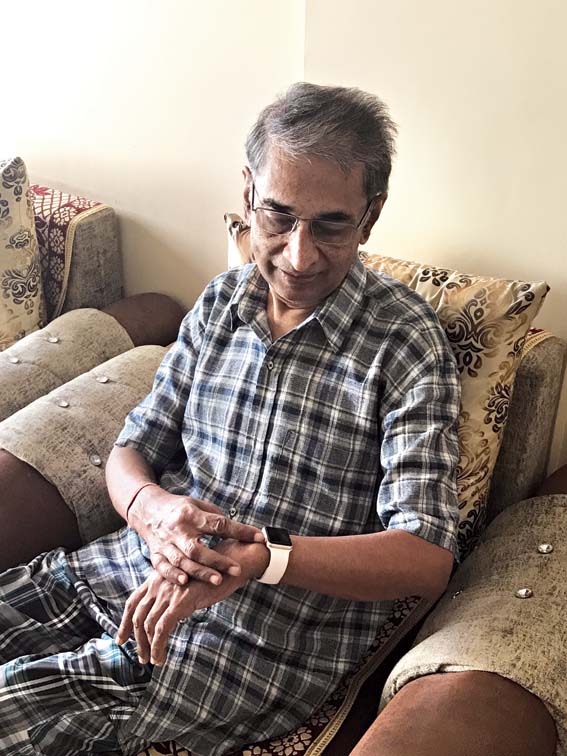When you’re busy, you don’t find time to anaylse your health. The Apple Watch has changed the watch world as much as the iPhone gave direction to the world of mobile phones. The Watch may look like a simple device on the wrist but it can gather critical data to indicate the status of our health. Over the last few years, especially since the introduction of the ECG feature, the device has saved the lives of many people or at least has made life easier for many who have health issues.
At the company’s Time Flies event this year we heard how a 26-year-old American was glancing at his Watch when it flashed increased heart rate. By the time the father of two reached the hospital, he was going into cardiac arrest. His life was saved.
Another unique case has come to light and this time in Indore where the life of R. Rajhans, a 61-year-old retired pharma professional, has been saved. “Last year, the Apple Watch Series 5 was launched and I gave one to my dad who has been using it ever since. One crucial addition to the Watch was ECG. My dad has been a bit of hypertensive, like most people are after turning 50 and has been taking his medicines routinely. He also goes for regular health check-ups. He has been completely asymptomatic to any heart condition and didn’t have any chest pain or anything like that,” says his son Siddharth Rajhans, who has been a student of Harvard University since 2017 and has worked with some top tech companies in Silicon Valley.
“In the last six-seven months, ever since the lockdown happened due to the pandemic, he couldn’t visit the doctor. So there was no tracking possible for any condition and he had been using the Apple Watch actively. ECG reports can show either Normal Sinus Rhythm (heart pumps to a steady beat) and Atrial Fibrillation or AFib (indicative of heart anomalies). Around 20-25 ECGs were showing signs of AFib,” he said.
ECG is something one usually doesn’t get done. “But since the Watch allows the function, one can check it on more regular basis. Twice or thrice, in the middle of the night, he was getting arrhythmia signals or irregular heartbeats. It’s a critical indicator. An interventional cardiologist asked us to get an echocardiography done. Generally doctors don’t ask for an Echo if the ECG looks all right. What I have learnt in the last few months is that ECG taken, say, once in a month or two months turn out normal. But if it is taken on a regular basis — like on the Apple Watch, it can show underlying conditions.”

R. Rajhans, a 61-year-old man from Indore, got to know about irregular heartbeats from his Apple Watch 5. Siddharth Rajhans
Diagnosis showed that the 61-year-old had low ejection fraction and was required to undergo surgery immediately, which was made difficult by the ongoing pandemic. The operation finally got scheduled and he underwent a mitral valve replacement surgery.
“The Apple Watch has really brought about a positive change because of the intersection of technology and a little bit of medical awareness. It saved my dad’s life. It’s a life-changing product,” says Siddharth. The tech expert wrote to Apple CEO Tim Cook, thanking him and received a reply “within a couple of hours”.
In September, Apple announced it s partnership with the government of Singapore on the health initiative LumiHealth, which is a personalised programme aimed to encourage healthy activity and behaviours using any series Apple Watch.
The Apple Watch is obviously not the final word when it comes to health issues but its features can be helpful, like for people with atrial fibrillation, family histories of heart disease or shortness of breath. These are people who may have symptoms that usually require expensive monitoring systems. But if people can at least record some of their symptoms on a gadget they already own, things get easier. This is exactly what the Apple Watch has done for R. Rajhans in Indore; it pointed him in the right direction.










